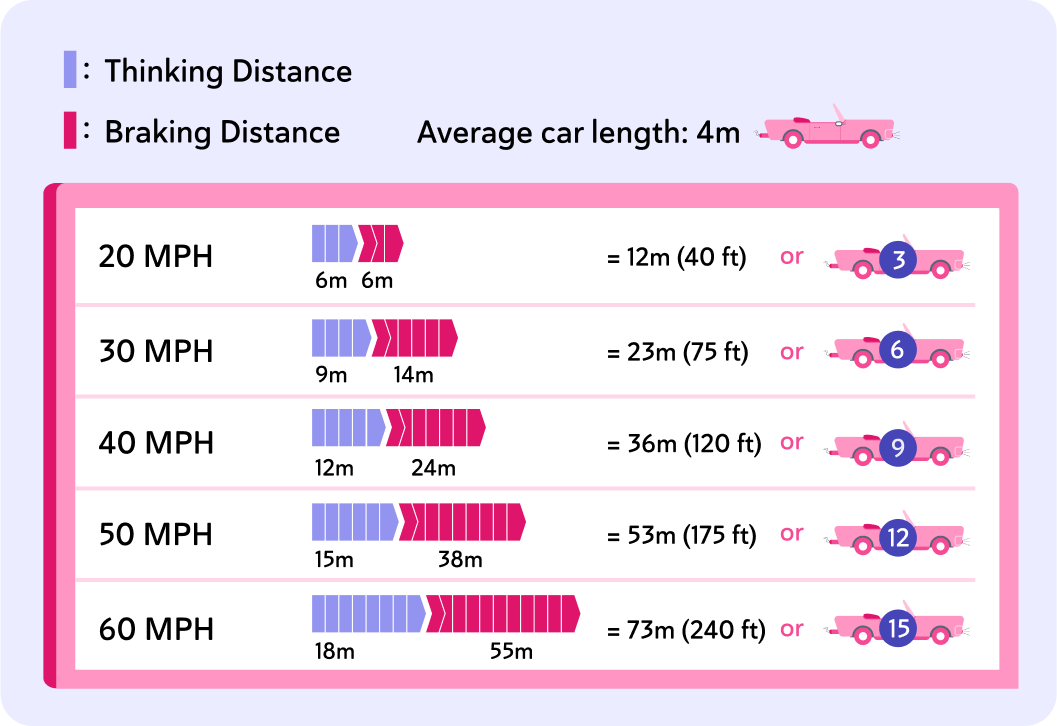YOU ARE LEARNING:
Stopping Distance

Stopping Distance
When we are driving a car and see something that makes us come to a stop, this stopping distance covered can be calculated depending on different factors.
Imagine a driver is travelling down a country road at 30 mph . He notices a stationary lorry ahead blocking his path. The lorry is approximately 30 metres in the distance. What should the car driver do?

If the car is travelling at 30 mph, it will take the vehicle some distance to come to a complete stop after the driver has noticed the hazard and applied the brakes. Try to guess the typical distance it would take.

The stopping distance is the distance it takes to bring a vehicle to a complete stop in an emergency. It may be longer than you expect, because it includes the distance it takes for the driver to react, and the distance it takes for the car to stop once the braking force is applied.
The thinking distance is how far the car travels during the driver's reaction time. If a driver is tired or has been drinking alcohol, how will this affect the thinking distance?

If the braking distance is the distance the vehicle takes to stop under the braking force, which factors might increase the braking distance? Pick all the options you think are correct.

You can select multiple answers
For a car travelling at 30 mph, the typical thinking distance is 9 m, the typical braking distance is 14 m and the typical stopping distance is 23 m. How would you describe the relationship between the three distances?

If the stopping distance is the overall distance it takes a vehicle to stop, it must be the sum of the thinking distance and the braking distance: thinking distance+braking distance=stopping distance
There is one important factor which affects both thinking and braking distance. Can you work out what it is from the examples you have already seen?

A driver is travelling at 60 mph on a motorway and has to perform an emergency stop. The driver's thinking distance is 18 m, and the car's braking distance is 55 m. What is the overall stopping distance of the car?

The image shows typical stopping distances at different speeds. For every speed increase of 10 mph, by how many metres does the thinking distance increase?


If a car is travelling at 40 mph, how much distance should the driver leave between himself and the car in front of him at the very least? Give your answer in metres.


Try to estimate the typical stopping distance for a car travelling at70 mph.
A) 80 m
B) 110 m
C) 96 m
Answer A, B or C.


Do you think that a lorry would have the same stopping distance as a car under the same conditions?

The mass of a vehicle does not affect thinking distance, but it does affect braking distance. A vehicle with more mass will have a greater braking distance, and therefore a greater overall stopping distance.
